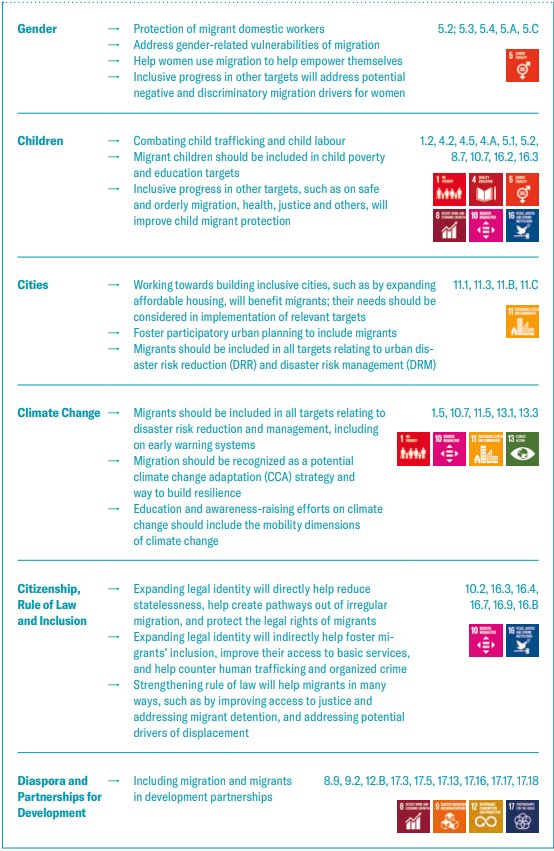La Declaración de Nueva York para los Refugiados y los Migrantes, aprobada por la Asamblea General de las Naciones Unidas en septiembre de 2016, enuncia el compromiso de los Estados de abordar las preocupaciones relacionadas con los grandes movimientos de refugiados y migrantes y darles respuesta. La Declaración reconoce que los Estados tienen la responsabilidad compartida de gestionar esos grandes movimientos de refugiados y migrantes “de manera humana, respetuosa, compasiva y centrada en las personas” y de brindarles un “apoyo amplio en materia de políticas, asistencia y protección, en consonancia con las obligaciones que incumben a los Estados en virtud del derecho internacional.” (Asamblea General de las Naciones Unidas, 2016: 2-3).
La Declaración expone los compromisos que se aplican colectivamente a los refugiados y los migrantes. Entre ellos figuran la prestación de apoyo humanitario, la facilitación del acceso a la atención de salud y la educación, el fomento de la colaboración entre los Estados para ofrecer una respuesta colectiva a la situación de los refugiados y los migrantes en todo el mundo, y el fortalecimiento de la capacidad de los Estados de responder de esas maneras. Asimismo, en reconocimiento de los diferentes factores que propician la migración, la Declaración establece algunos compromisos que se aplican por separado a los refugiados, y otros que se aplican solo a los migrantes. Además, la Declaración preconiza la aprobación de un marco de respuesta integral para los refugiados (en lo sucesivo, el “pacto mundial sobre los refugiados”) y de un pacto mundial para una migración segura, ordenada y regular.
La Declaración de Nueva York para los Refugiados y los Migrantes y el Pacto Mundial para la Migración Segura, Ordenada y Regular son compromisos importantes que facilitan la cooperación internacional en materia de migración. Han promovido esa cooperación ayudando a los Estados a lograr consensos sobre cómo regular y gestionar la migración de un modo que proteja la vida humana y sea beneficioso para todos. En virtud de ellos, se han abordado una amplia gama de cuestiones relacionadas con la migración, con numerosas partes interesadas, y se han establecido nuevos arreglos institucionales para ayudar a los Estados a colaborar en la gestión de la migración.




